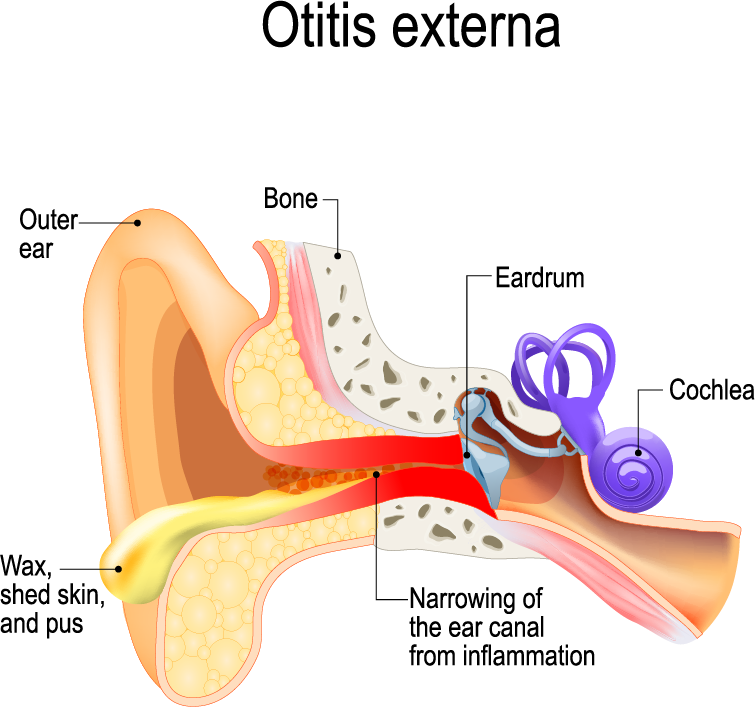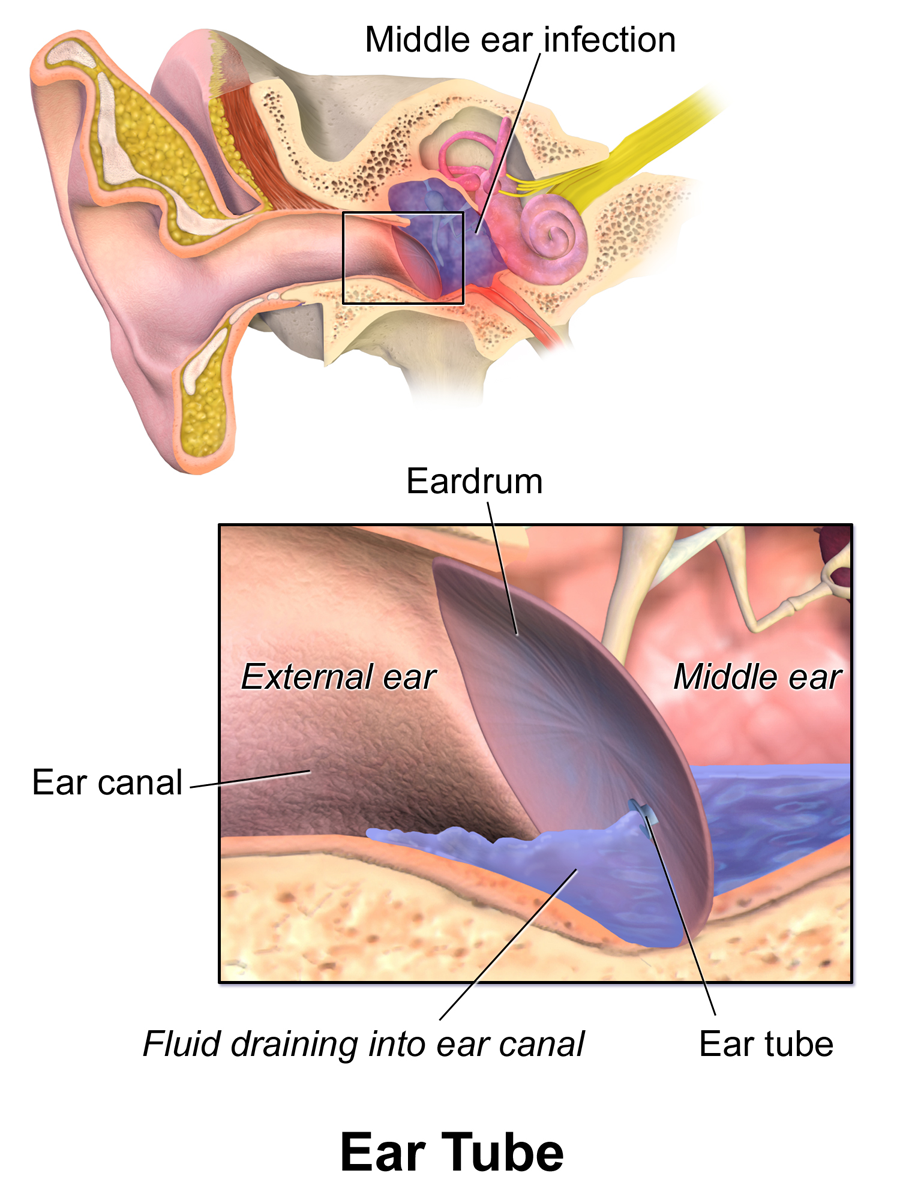Treatments: Ear Infection
Sinus pain, facial pressure, runny nose, poor sense of smell, and headache commonly relate to infection in the sinuses, and benefit from treatment if frequent, severe, or long-standing.
Medical treatment for otitis media (middle ear infection)
Otitis media is what most people probably think of as an “ear infection.” It typically is a painful condition with hearing loss due to infection in the space behind the ear drum. If it is a recent infection (acute otitis media), the usual suspects of bacteria are likely and an antibiotic is chosen accordingly. Oral antibiotics are the mainstay of treatment, but if a perforation is present in the ear-drum (diagnosed either by seeing a perforation or noting the presence of pus draining into the ear canal), high concentration antibiotic drops may be placed in the ear to pass in through the ear drum hole to the site of infection with good effect. In the case of non-response to initial antibiotic drops, reexamination and a culture may be undertaken to assess for drug resistant bacteria or fungal infection. Popping one’s ears (autoinsufflation) and possibly a decongestant nasal spray (e.g., oxymetazoline) and a nasal steroid spray (e.g., fluticasone) are sometimes also recommended as adjunct measures to help treat otitis media. As a guideline, having more than four of these infections in 6 months or five infections in one year is the usual threshold for when pneumatic equalization tube placement is recommended.
Otitis externa (“swimmer’s ear”)
Otitis externa is an infection of the ear canal itself. It is called swimmer’s ear because significant water exposure is a risk factor for its development, but any water exposure counts, including hot-tubbing, water retained in the ear canals after showering, or sweating. Antibiotic drops (such as ciprofloxacin) are the usual first-line treatment for bacterial infections, and one of several anti-fungal medication are used for apparent fungal infections. When a severe otitis external is present, cleaning the ear canal under a microscope, placing a foam wick in the ear canal, and/or obtaining a culture of the ear canal to better determine the specific type of infection and best antibiotic or anti-fungal may be necessary. Other than using medication drops, keeping the ear dry (such as with a hair blow drier) and controlling diabetes (if present) considerably improve treatment success. Treating a fungal otitis external is notoriously challenging, and may require several return trips to the ear specialist for ear cleaning and treatment.
ear tubes (“PE,” tympanostomy tubes, or Pneumatic equalization tubes)
Simple and very effective, an ear tube (also called pneumatic equalization tube, or ear ventilation tube) may be placed in a matter of minutes and work by doing the following:
Allow air pressure to equalize on each side of the ear drum (not dependent on the Eustachian tube)
Allow fluid of pus from the middle ear space to drain out
Allow antibiotic drops to get into the middle ear space
Treatment for Mastoiditis
The mastoid is a series of air spaces (like caves) in the bone behind the ear and these spaces connect with the air space behind the ear drum and the Eustachian tube. A small amount of fluid in the mastoids occurs with most middle ear infections, and treatment for these is with medicines. A rapidly developing, severe infection in the mastoid may require prompt surgery, which may be as simple as placing a ventilation tube, or it may be a mastoidectomy, which involves carefully drilling out the airspaces of the mastoid. Long-standing mastoiditis (which may be associated with cholesteatoma) may not be quite as urgent, but often requires mastoidectomy (possibly including repair of the ear drum, in which the procedure is called tympanomastoidectomy) as well.






